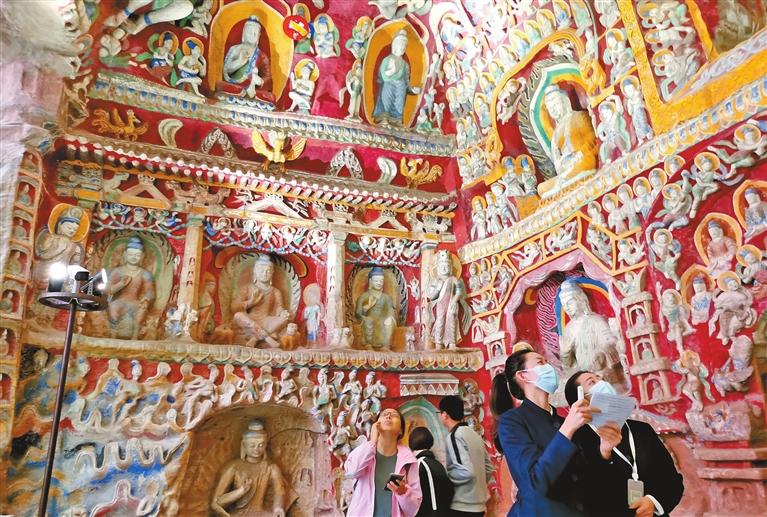
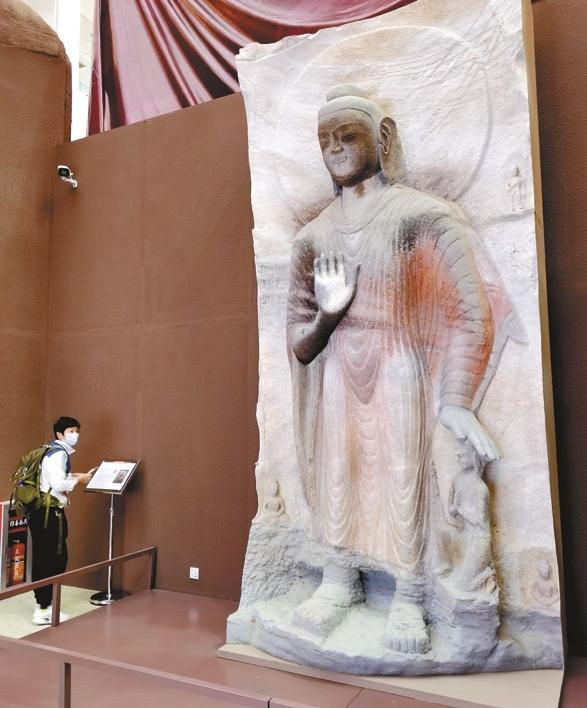
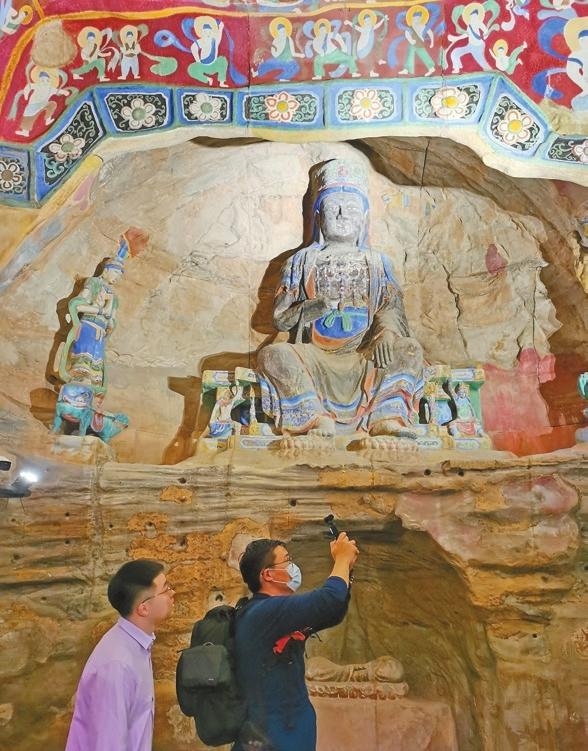
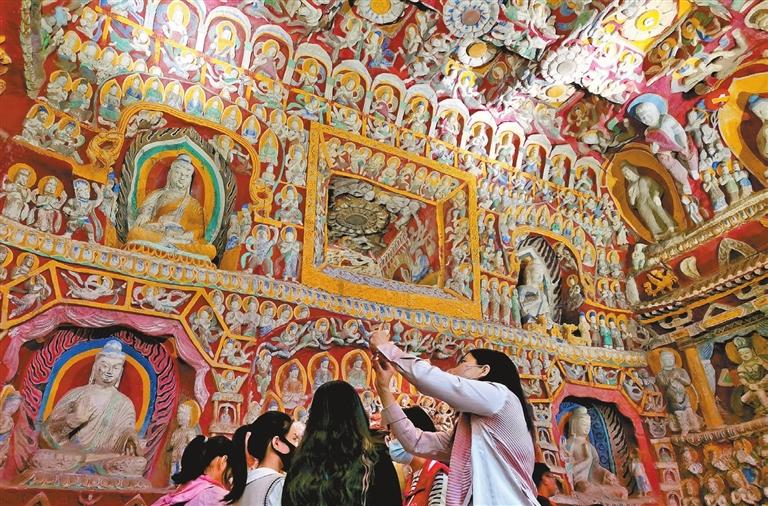
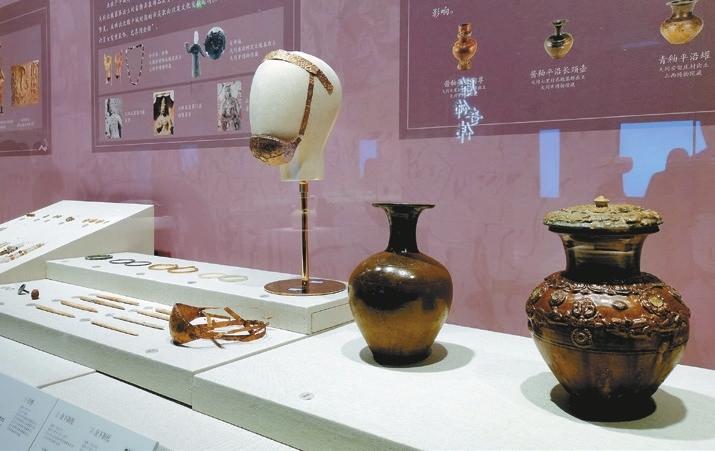
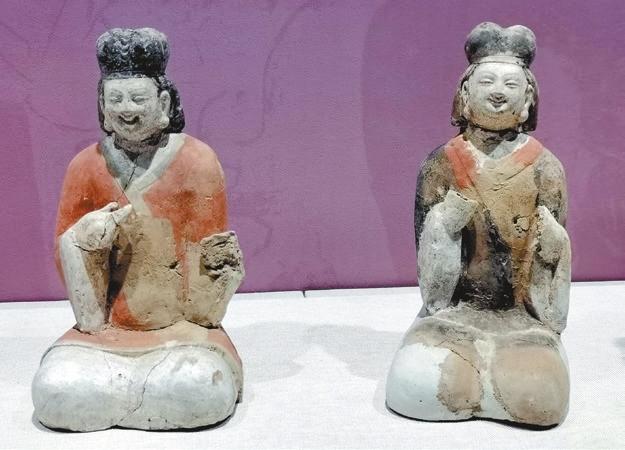
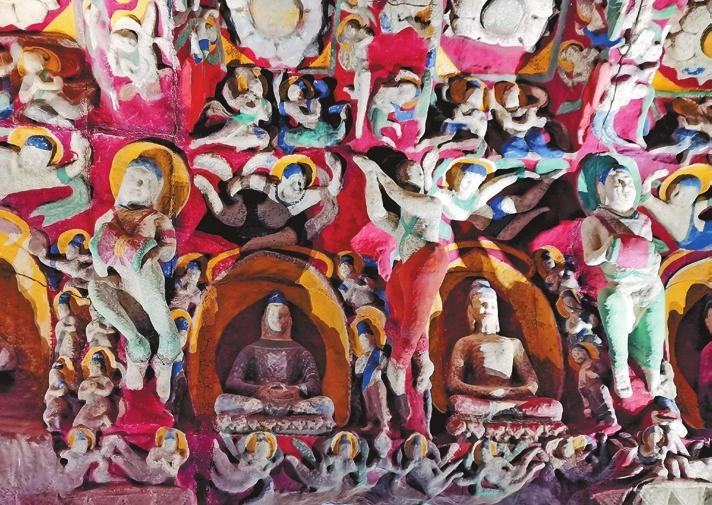
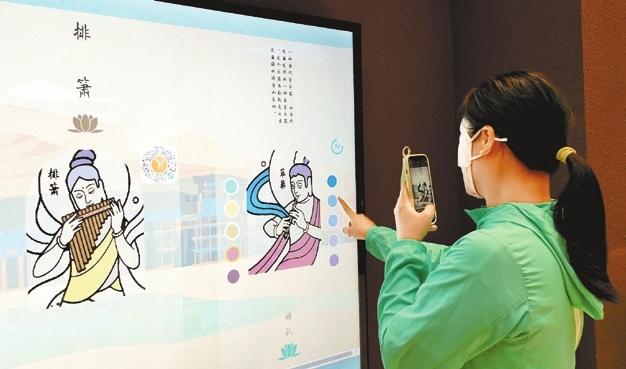
Cao Zhen caozhen0806@126.com NOW through May of next year, people in Shenzhen can check out the replicated Yungang Grottoes Cave 12, famously known as the “Music Cave,” at the Shenzhen Museum’s History and Folk Culture Division in Civic Center. Upon entering the 3D-printed full-size Cave 12, visitors are instantly enveloped in a breathtaking world of ancient Chinese Buddhist art. The marvelous replica stands 9-meter tall, mirroring the original’s grandeur with its diverse assembly of intricate sculptures and vibrant murals. Strolling in the replicated cave, visitors will be awed by the fine details, pausing frequently to capture the magnificence with cameras or phones. The symmetrical layout of Cave 12 unfolds into front and rear chambers adorned with dazzling sculptures of musicians playing various instruments, evoking the essence of a live concert resonating from 1,500 years in the past. The palace-like cave reflects the grandeur of the mid-Northern Wei Dynasty (386-534), offering visitors a glimpse into its resplendent palace architecture. The original Yungang Grottoes Cave 12, built between 470 and 494 in Northern Wei’s capital Pingcheng (modern Datong, Shanxi Province), has earned its place among the five splendid caves of Yungang due to its stunning murals and Buddhist sculptures. Listed as a UNESCO World Heritage site in 2001, the Yungang Grottoes now encompasses 254 caves of various sizes and more than 59,000 Buddhist statues. With imperial support, the carving of the grottoes started in 460, taking nearly 70 years of meticulous craftsmanship to build the complex. The grottoes represent a synthesis of Chinese and foreign influences, including Indian, central Asian and western Asian art elements, as well as Greek and Roman architectural styles and decorative patterns. Sharing fame with the Mogao Grottoes in Dunhuang, Gansu Province, and the Longmen Grottoes in Luoyang, Henan Province, the Yungang Grottoes is one of the largest ancient grotto complexes in China. Its grand caves, diverse sculptures and exquisite carving art represent the remarkable accomplishments of Buddhist cave art in China in the fifth century. The Cave 12 replica is one of the 237 exhibits displayed in the newly opened “The Assemblage of Civilizations — Pingcheng and Yungang Grottoes Art in the Northern Wei Dynasty” exhibition, co-organized by the Shenzhen Museum and the Yungang Research Institute, in collaboration with eight other organizations, including the Palace Museum, Shanxi Museum and Hebei Museum, to name a few. Visitors can explore other Northern Wei relics on the museum’s second floor, including stone carvings, ceramics, gold and silverware, accessories and clay figurines. These artifacts exemplify the ethnic fusion and cultural exchange between China and the world during the Northern Wei, and Yungang Grottoes’ profound influence on the art and culture of the dynasty and beyond. Dates: Through May 24, 2024 Booking: WeChat account “iszbwg” Venue: Shenzhen Museum’s History and Folk Culture Division, Futian District (深圳博物馆历史民俗馆) Metro: Line 2 or 4 to Civic Center Station (市民中心站), Exit B | 
